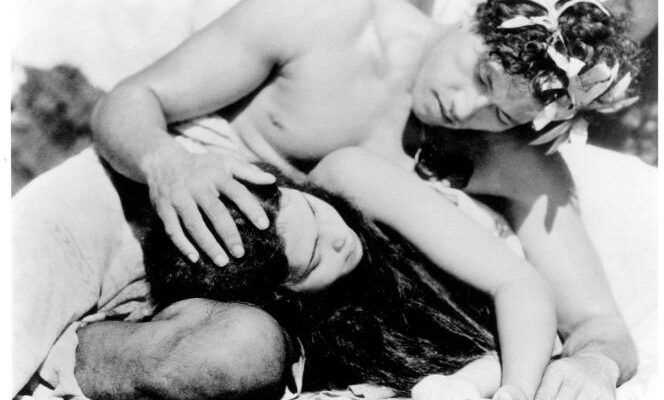“Murnau des ténèbres”, by Nicolas Chemla, Recherches-Midi, “Cobra”, 240 p., € 19, digital € 13.
There is in the history of the 7e art some cursed shoots: The Exorcist (1973) by William Friedkin, Poltergeist (1982) by Tobe Hooper, The Man Who Killed Don Quixote (2018) by Terry Gilliam and the oldest of them all, Taboo (1931), by Friedrich Wilhelm Murnau, “The greatest film by the greatest filmmaker”, according to Eric Rohmer. It required documentary rigor mixed with phantasmagoric audacity, a style as luxuriant as the Polynesian landscapes that serve as the backdrop for this forbidden love story, to reproduce the incredible epic of this feature film, as solar as Nosferatu was twilight.
Turning events
Nicolas Chemla accomplishes this miracle in Murnau of darkness, his second novel after Mr. America (Séguier, 2019). Here, a writer in the midst of a midlife crisis, determined to cast off the moorings of his city life, meets in a hut in Tahiti a half-naked and gaunt old man. This one has a face of “Forgotten demon” and a hollow voice. This spectral-looking man has known the German director well, he says. From Berlin, he followed him to Hollywood which made him king, then, in 1929, in the Marquesas Islands and Bora-Bora to film Taboo. That is to say a period of eighteen months during which there occurred a series of accidents (drownings, poisonings, fires), as if Murnau had triggered the wrath of the spirits, the mana, he who built a house and the headquarters of his film crew on land considered sacred by the natives. Cursed by a shaman, the director of Dawn died, at the age of 42, in a car accident, eight days before the premiere of the film.
Beyond the exciting filming adventures narrated by the old man, Nicolas Chemla undertakes, in this adventure story, to confront the differences of views of two sacred cinema monsters, who left together for Tahiti for this common project: the Irishman Robert Flaherty (Nanouk the Eskimo), explorer and father of ethnofiction cinema, and Murnau, therefore, leader of German expressionism.
“Recreate paradise”
Showing the other side of paradise, the ravages of capitalism on the local economy and the damage caused by the West on indigenous culture: this is Robert Flaherty’s project. For his friend Murnau, on the other hand, reality is only a raw material to be modeled, and the cinematograph, “An occult art, a form of black magic”, cousin of Satanism since it consists of “Conquer death, recreate life, abolish time”, as Nicolas Chemla writes. “He was finally confident that he would achieve his goal – to recreate paradise. Before corruption by the inevitable forces of civilization. ” The romantic vision of Murnau, who finances the film from his own funds, wins. Stunned by the idyllic beauty of the place, their telluric forces and their excess, Murnau “Discovered the reality submerged by the dream”.
You have 12.67% of this article left to read. The rest is for subscribers only.
